
Saturdays are my day of play in the kitchen. I rise early in our quiet house to bake bread for the week. A boiled kettle, a cup of tea, then I start mixing and planning my day just as the sun pokes through the kitchen window. After mixing, we enjoy a lazy breakfast while I watch the dough and wait. By midday the baking is done, enticing me to cut a slice (or two) for lunch.
Last weeks Dark Rye disappointment also fuelled a rye test bake, but I will save that for another post in the next few days as I am waiting for the crumb to set.
With the rye bake keeping me busy both mentally and physically in the kitchen, I decided to be kind on myself and bake a simple adaptation of the country bread with two starters by using a proportion of wholemeal spelt in the final dough. I think I have found a winner both with flavour and texture.
Milling and Sifting
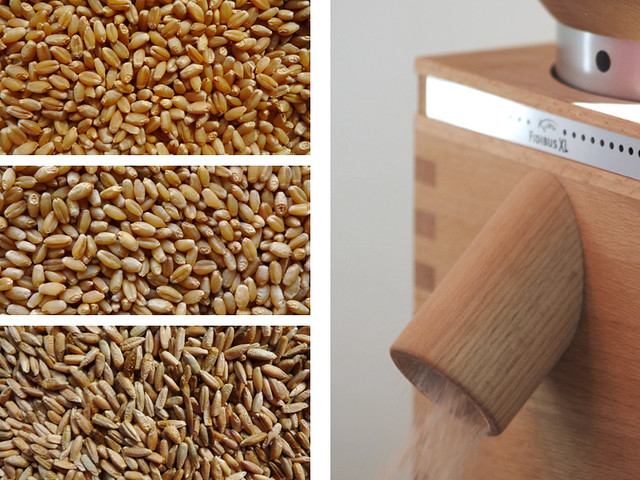
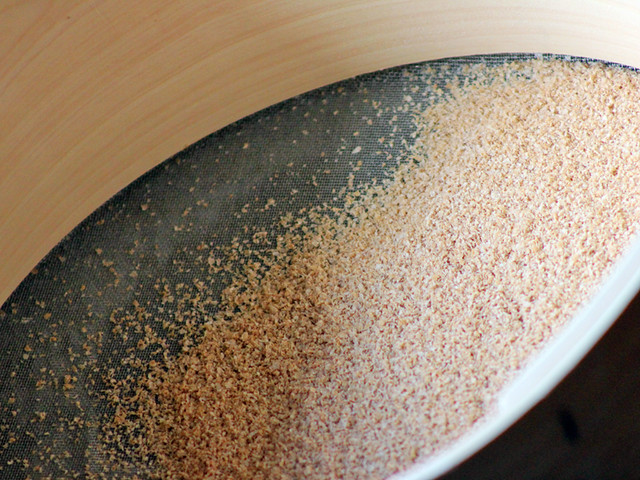
While last weeks light rye was certainly delicious and moist (with the soaked cracked rye) I found the sharp flavour of using only the rye starter too assertive. The overnight rise in the fridge compounded this further and the sourness became quite pronounced a few days after baking. Using a combination of the two starters and a room temperature proof seems to restore a balance that I felt was lacking in last weeks bread.
I prepared the flour the night before. The wheat was milled and sifted. The caught material was remilled and sifted again before being used in the final flour with the caught bran set aside. The spelt was milled and then added to the final flour mix without sifting while the rye grains were milled coarsely and fed to a hungry rye starter for use in the morning. My usually wholewheat starter was fed sifted wholewheat and 30% wholemeal spelt before being mixed to a 50% hydration and placed in a cool spot overnight.
3 grain country bread with two starters
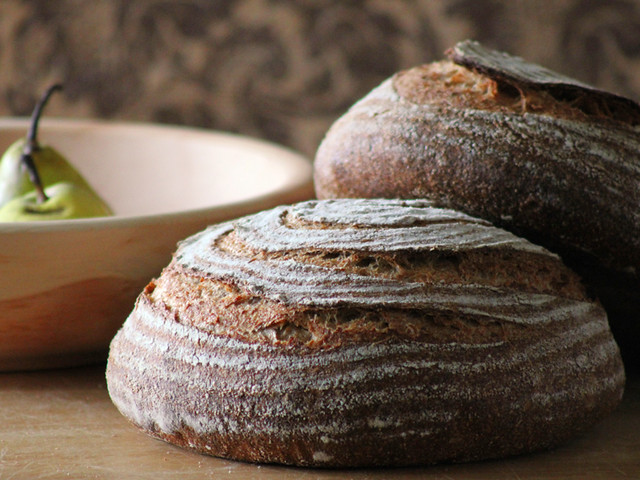
Formula
Overview | Weight | % |
Total flour | 1100g | 100% |
Total water | 900g | 82% |
Total salt | 25g | 2.3% |
Prefermented flour | 167g | 15% |
Desired dough temperature 23°-24°C | | |
| | |
Final dough | | |
Rye starter @110% hydration | 115g | 12% |
Sifted wholewheat starter @ 50% hydration | 168g | 18% |
Sifted wholewheat flour | 603g | 65% |
Wholemeal spelt flour | 330g | 35% |
Water | 784g | 84% |
Salt | 25g | 2.6% |
Last fold, shape and proof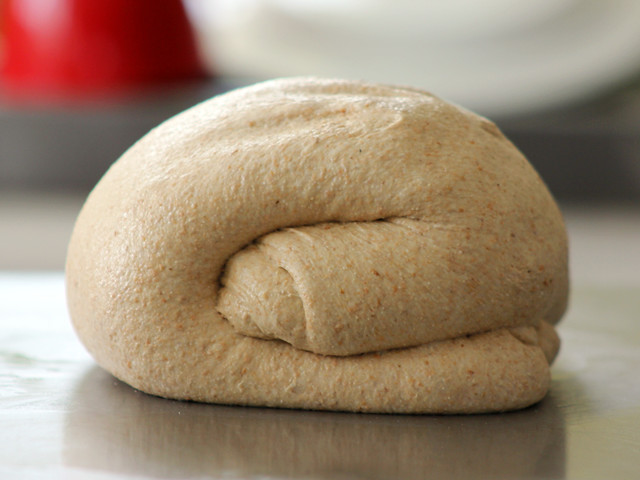

Method
- Autolyse flour and water for one hour.
- Incorporate starters by squeezing into dough with wet hands until smooth and feel no lumps then knead for 5 mins (I used a gentle slap and fold because of the amount of spelt). Rest dough for five mins. Incorporate salt and knead for a further five mins.
- Bulk ferment three hours with three stretch and folds 30min apart in the first 1.5hrs.
- Preshape. Bench rest 20 mins. Shape.
- Final proof was roughly two hours at room temperature (23°).
- Bake in preheated dutch oven for 10 mins at 250°C then a further 10 mins at 200°C. I then removed it from dutch oven and baked for a further 25 mins directly on stone for even browning.
This is such pleasant dough to work with. Spelt and rye bran are flecked throughout. The kneading and folding gives strength so the shaped loaves hold themselves proudly before being placed in bannetons.
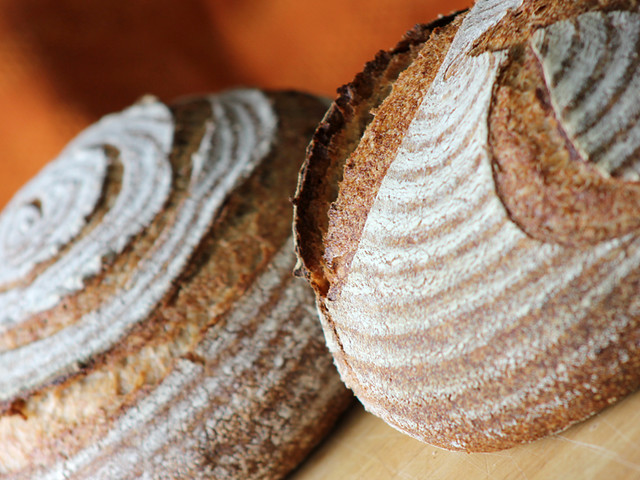
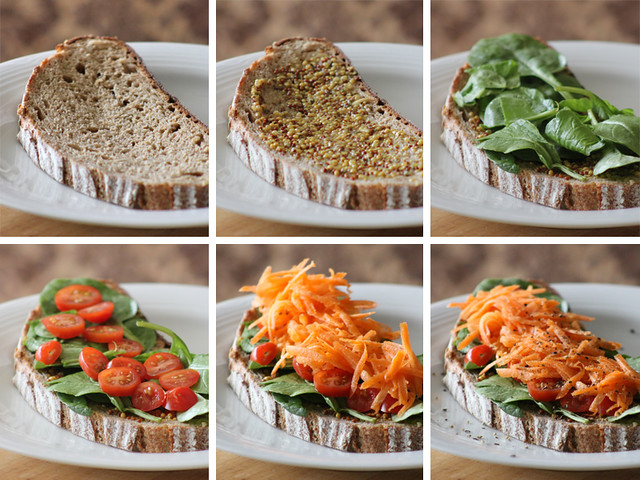
I had massive oven spring considering the amount of freshly milled wholemeal flours … the “Pip” was very pleased.
I played again with the scoring this week. My partner’s nickname is “Rat” so in her ratty honour I scored one of the loaves with a giant “R” … the “Rat” was very pleased.
The flavour for me is a balance between the tang in the rye and subtleness of a wheat starter. This not a boring bread, but it does not dominate the senses either.
… and after a busy day in the kitchen I prepared a simple lunch before we headed outside to continue the rest of our day in the spring sunshine.
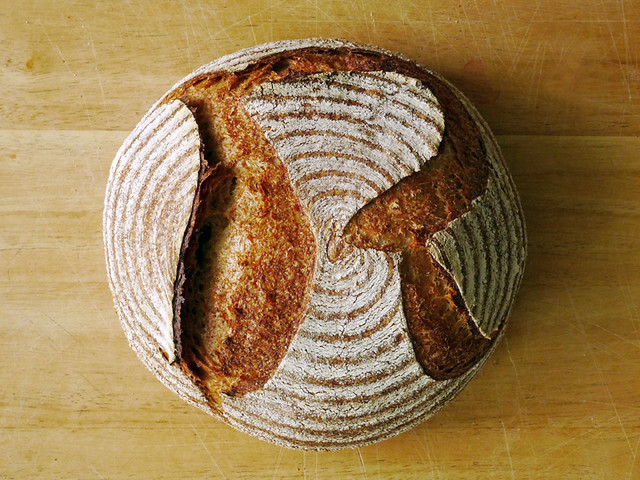
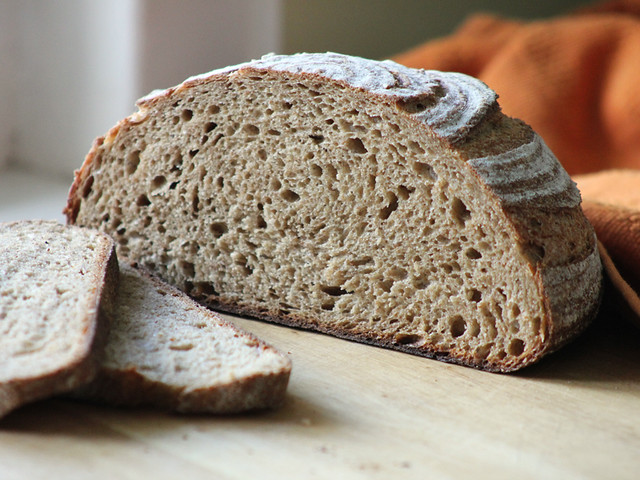

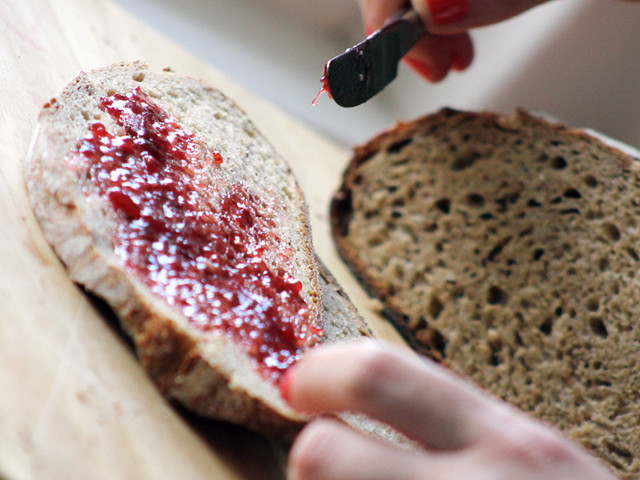
Cheers, Phil (and the Rat)